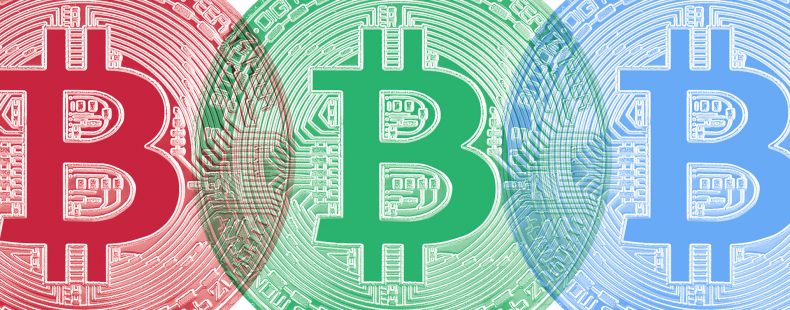Over the past couple years, there has been a lot of buzz around cryptocurrency. The nations of El Salvador and the Central African Republic have even gone so far as to adopt a cryptocurrency as one of their official currencies. However, for those of us who are old school and still use classic dollars and cents, cryptocurrency and its related lingo can be kind of confusing. We are going to break down the language around the hype, from the practical (ICOs and digital wallets) to the very silly (this is gentlemen).
fiat currency vs. cryptocurrency
In the modern world, nations use what is known as fiat currency. This means that the government guarantees that the money is worth something and can be used to trade for goods and services. Examples of fiat currency are the US dollar and the Euro. Critics of this system say that this gives the government too much control over the currency, and that is where cryptocurrency comes in.
Rather than using the government as a guarantee of value, cryptocurrency uses an encryption algorithm to guarantee the value of the currency. That’s where the crypto– part of the word comes from. It is a shortening of the word cryptography, the use of algorithms to secure digital information. In fact, cryptocurrency is commonly referred to in the shortened form crypto.
encryption
Encryption is “the process of encoding a message so that it can be read only by the sender and the intended recipient.” Encryption has been a part of code-making and code-breaking since ancient Egypt. In cryptocurrency, encryption is part of the process used to safely create, send, and store digital currencies. A user has a specific key that can unlock the encryption, which ensures that they are the owner of that currency.
hash/hashing
Hashing is a process similar to encryption. Encryption, however, is a two-way process, and data can be decrypted. But a hash only works one way; it cannot be decoded. Investopedia compares it to putting steak through a meat grinder; you can’t turn the hamburger back into steak. Hashing is used to create the digital ledger that records transactions of cryptocurrencies. You can’t see the exact amount, sender, or recipient, but you can see that a transaction has occurred.
blockchain
The digital ledger that records hashes in cryptocurrency is known as the blockchain. It’s a chain of blocks of data that keeps track of verified transactions of cryptocurrency. This avoids the “double spending” problem that other digital currencies face.
wallet
Just like how we keep our dollar bills, coins, and credit cards in a physical wallet, cryptocurrencies are held in a digital wallet. In this wallet, keys are held to decrypt the crypto a user holds so they can be spent, sold, or transferred.
mining
Physical currencies are made out of a variety of materials: paper, plastic, copper, nickel, and so on. Cryptocurrencies are made through a process known as mining. This is a computer process that requires incredible amounts of power—more than that of entire nations. Basically, miners use a computer program to guess the hash of a process and add a transaction to the blockchain. In exchange, they receive a coin for their “proof of work.”
coin
A unit and denomination of cryptocurrency is known as a coin. There are numbers of different crypto coins on the market.
Bitcoin
One of the most well-known crypto coins is Bitcoin, which uses the currency designation BTC. Bitcoin was launched in 2009. At the time of writing, 1 BTC is trading for about $30,000 USD.
Dogecoin
There are numbers of crypto coins known as “meme coins” because they are silly and based off of memes. One example is Dogecoin, a reference to a popular meme featuring a Shiba Inu named Kabosu giving side eye. Dogecoin has gotten into hot water after patron Elon Musk was sued for artificially inflating the price of the coin.
Tether
The popular cryptocoin Tether markets itself as a “stablecoin,” claiming that its crypto offerings are backed with fiat currency. However, this claim has come under scrutiny in recent years, and it has been accused of lack of transparency over its reserve holdings.
cryptocurrency exchange
A cryptocurrency exchange is where cryptocurrencies can be traded for other cryptocurrencies or fiat currency. One major crypto exchange that has recently been in the headlines for fraud is FTX, which stood for Futures Exchange. When its founder Sam Bankman-Fried was arrested in the Bahamas in December of 2022 and the exchange shut down, the global crypto market was in shock.
diamond hands
Cryptocurrencies have their own communities of boosters. One expression that has come out of these online communities is diamond hands, often expressed with the emoji 💎🤲. This means that investors with resolve will hold onto an asset to sell high even when the value dips.
this is gentlemen
Originally a mistaken rendering of the phrase “This is it, gentlemen,” this is gentlemen has become shorthand in cryptocurrency forums to express excitement about an ICO or good news about a rise in the value of a coin.
Initial Coin Offering (ICO)
When a cryptocoin first goes on sale on the market, it is known as an initial coin offering or ICO. How well a coin does in its ICO is considered to be an indicator of how well it will do in the long term.
decentralized finance (DeFi)
The promise of cryptocurrencies is that they allow for decentralized finance. As we noted, in the fiat currency system, the government and central banks control the supply of currency in a system and its price (through controlling interest rates). Under the decentralized finance or DeFi system, in theory, individuals can control the supply of currency by creating, mining, and trading their own cryptocurrencies.
decentralized autonomous organization (DAO)
In keeping with the decentralized, libertarian ethos of cryptocurrency, another use of this technology to organize action that has been proposed is the DAO. In a DAO, users “vote” using tokens or cryptocoins in transactions registered on the blockchain to choose a course of action. Many of these use the Ethereum blockchain, which also has its own cryptocurrency known as Ether.
Non-Fungible Token (NFT)
One example of tokens that are traded on the blockchain is an NFT, or non-fungible token. Something that is fungible can be traded or exchanged for something else, like how one currency can be exchanged for another. An NFT is alleged to be entirely unique, like a one-of-a-kind digital trading card. When an NFT is purchased or traded, this transaction is recorded on the blockchain, just like cryptocurrency transactions. A once-popular NFT collection was the Bored Ape Yacht Club which, despite allegations of both inflated prices and a connection to racist 4chan memes, traded for millions of dollars. These NFTs feature images of apes in a variety of outfits.
gas fees
Gas is the term given to describe the fees charged for executing and verifying a transaction on a blockchain. Typically these are a fraction of the total value of the transaction.
rug pull
As you might have guessed from the number of lawsuits that have popped up in this explainer, the cryptocurrency world is particularly vulnerable to scams. One of the most common forms of scams is known as a rug pull. Essentially, the founders of a cryptocurrency will promote and pump up the value of their coin. Then, they will take all of the investments and run, leaving the coin holders with a virtually valueless coin. Examples include OneCoin and SQUID.
Cryptocurrency has been the subject of a lot of hype but, as we have seen, it can be a risky business. A related and similarly hyped technology with a lot of confusing lingo around it is artificial intelligence, or AI. You can get yourself up to speed on the language of that hype cycle with our AI glossary here.
Take the quiz!
Think you’ve got the resolve, resilience, and nerve of an investor with diamond hands? Try our cryptocurrency terms quiz and find out!














